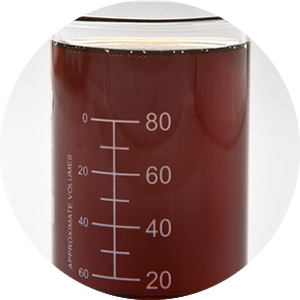Fish Oils
Fish Oils
Product Specification
Typical Nutritional Analysis
| Iodine Value *1 | 200 g/100g Max |
| Saponification Value *2 | 187 mg KOH/g |
| Density | 0.924-0.928 g/ml |
| Omega3 | 25% Min |
| Free Fatty Acids *3 | 4% Max |
| Moistures & Impurities | 1% Max |
| Peroxide Value *4 | 6.0 meq O2/kg |
*1 The iodine value: The iodine value of a lipid is the mass of iodine (I2) (expressed in g) capable of binding to the instaurations (most often double bond) fatty acids 100 g of fat. The iodine value of a saturated fatty acid is zero.
*2 Saponification Value: Quantity esters, anhydrides and other fatty substances in a lubricant, expressed in milligrams of potassium hydroxide required to saponify completely one gram of fat. It is possible to make the fatty oil content in the performing saponification cutting.
*3 Free Fatty Acids: (Free Fatty Acids, FFA) the amount of oleic acid – resp. Lauric acid or palmitic acid – contained in 100 g of fat or oil. The content of free fatty acids is an important quality index: the lower it is, the more oil (or fat) is stable and it keeps better. The free fatty acid content of crude oils is between 0.1 and 4%, the refined oils from 0.01 to 0.1%. In evaluating oils, the determination of free fatty acid is one major qualitative criteria, with the organoleptic characteristics.
*4 Peroxide Value: The peroxide (also called index Lea) is sought to assess the state of conservation of fat during storage. In fact, fats can oxidize in the presence of oxygen and certain factors favoring (UV, water, enzymes, trace metals, …). This oxidation or rancidity called autoxidation aldehyde leads initially to the formation of peroxides (or hydro peroxides) by attachment of one mole of oxygen to the carbon located in position relative to a link ethylenically unsaturated fatty acids constituting the glyceride.
Appearance
Light brown transparent Fish Oil in vicious liquid state.
Process system of the Fish Oil is Steam Dried (SD) and packaged in 22.00 Kg Flexitank.

